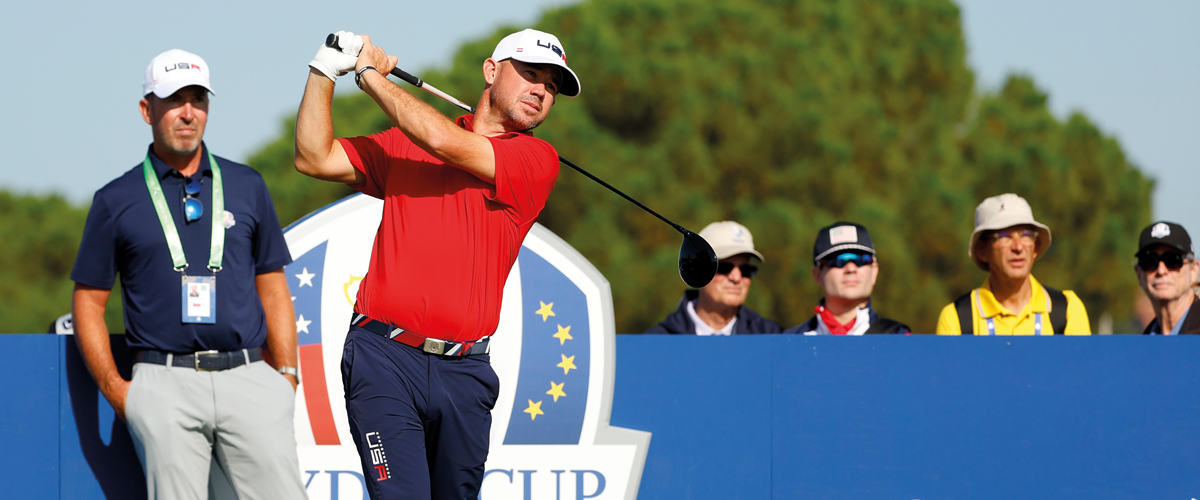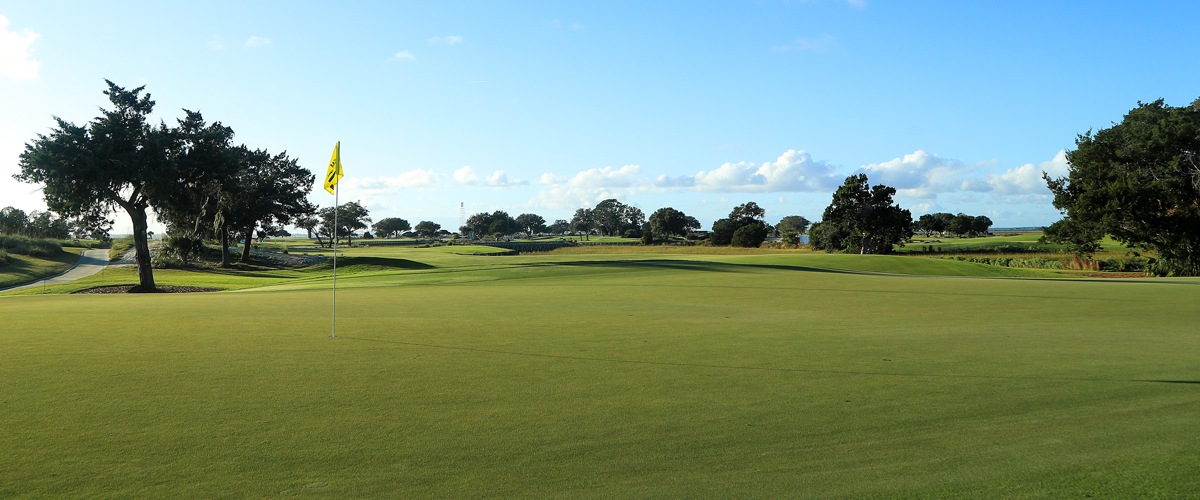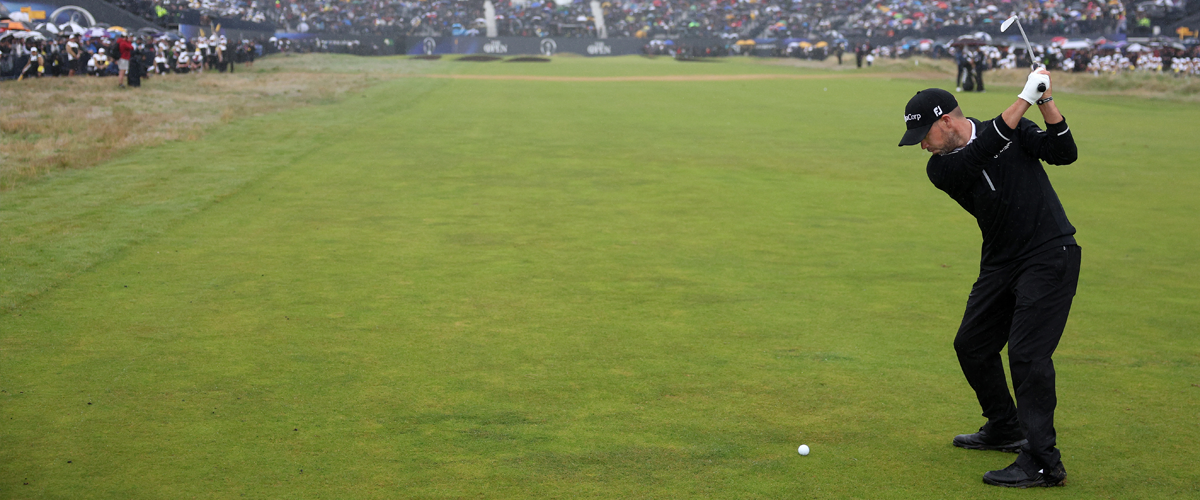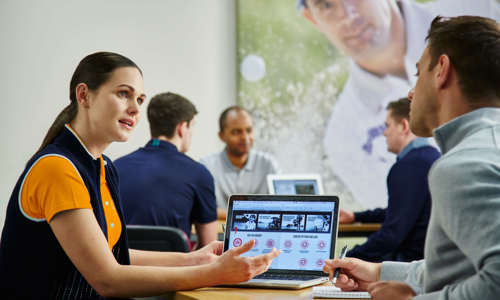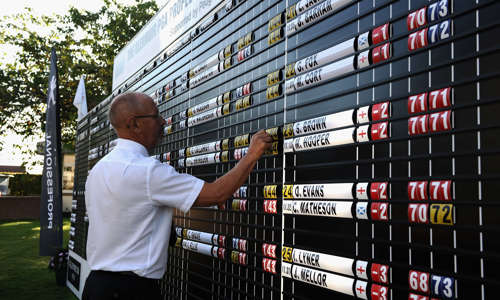READ THIS IF YOU:
Want coaching advice from an expert
Are just starting your coaching career
Justin Parsons’ message to coaches is simple: give as many golf lessons as possible. And it’s a rule based on experience.
When the man from Northern Ireland began coaching full-time at Blackwood Golf Centre in the early 2000s, he could give up to 80 half-hour golf lessons a week. And it has stood him in good stead.
He went on to become Director of Instruction at The Montgomerie, in Dubai – having arrived in the city with just some business cards and CVs to help him find work – before being asked by Claude Harmon to help him open the Butch Harmon School of Golf in Dubai Sports City.
Parsons began teaching more on tour in 2014/15, with Peter Uihlein being his first high-profile client, and now works at Sea Island, in Georgia, where clients include Brian Harman and Harris English.
Here, he shares the coaching tips that have helped him become a world-renowned golf coach.
“From a PGA Professional perspective, our job is to make people better at golf and have them love golf more.”
- Justin Parsons, PGA
THE BACKGROUND
I take a fairly detailed history with every player, and I see big commonalities in sporting backgrounds or where they are living. Players will move in certain ways depending on the sports they have played. In Europe, where we played a lot of rugby and football, we had very strong legs and we had a lot of players coming through who would heavily use their legs. In the States, with a bit more baseball and tennis, I feel like they’re maybe a bit more balanced, there’s a little bit more upper body stuff going on.
So, I think you’ve got to look out for those things and look for where you might find imbalances, whether through your experiences, strength testing, or Titleist Performance Institute (TPI) or functional movement systems (FMS) type testing. Then you can help to balance the golf swings.
We definitely see transference from other sports, such as fine hand-eye co-ordination or fast, vigorous movement. So, if you’ve got young players, if you can include something that has an onus on balance and movement, something that has an onus on speed, you’re always going to get ahead of the game whenever you need to make their golf swings more correct.
ADAPTING MY TEACHING STYLE
Butch Harmon, who’s been my mentor, said: “There’s no one way to swing a golf club. There’s a lot of different ways to swing a golf club. And there’s a lot of players who’ve made it work.” That’s probably the best piece of advice I’ve ever been given.
You’ve got to get into their mindset, figure out what they can do and how they can do it, recognise that you’re dealing with individuals and enter into the world of the person you’re with, as opposed to trying to take your world to that person. It’s not about you, it’s about the person that’s in front of you.
So if there is a player who hasn’t had any real experience and doesn’t have a huge amount of confidence, or a huge amount of co-ordination, the ceiling on that golf lesson might be making a short swing, making good contact out of the middle of the club face and seeing the ball go in the air. And it might give that person almost as much of a thrill as Brian Harman when he lifted the Claret Jug, it might be a huge deal for that person. If they’re already making good contact, what’s next? What is their trajectory? What’s the spin? Is the golf ball doing exactly what they want it to do? You’ve always got to try to get the player to be able to do what they’re trying to do with the golf ball.
And if the player’s leaving with a big smile on their face, that’s a huge achievement. And that’s really part of coaching the game of golf and what’s going to keep people coming back.
USING TECHNOLOGY WISELY
If you’re coming to me for a golf lesson, I’m going to be able to go next door, look at your golf swing on video, take some swing catalyst stuff, take some TrackMan stuff, we could put you on Gears. And from all of that information, those tools, and by using my experience, my wherewithal, science, logic, history - that would allow me to make a decision about which way to take it.
We want to use these things as tools but they’re not the be all and end all. TrackMan helps us get a much clearer picture as to what’s going on with the golf ball, advanced motion measurement (AMM) helps us get a much better indication of what’s going on with a lot of the different joints and accelerations and decelerations, Gears is very pretty and help us with lots of different angles, but we still don’t know a lot of what goes on, like shoulder structure, how the shoulders are moving, things in the golf swing, it’s very difficult to track that.
So there ultimately has to be some experience.
And we’re also dealing with emotional human beings. Some of whom love looking at numbers on screens, some of whom hate looking at numbers of screens, some who love looking at videos, some who just want you to tell them what the feel is with their feet in the ground.
So I think of technology as part of the toolkit. Tools are great things, and they can help us get to the conclusion quicker, they can help us do our job more accurately and efficiently, but I don’t think we should live and die by them.
“Seeing the ball go through the air might give that person almost as much of a thrill as Brian Harman when he lifted the Claret Jug.”
-
THE DANGERS OF THE DRIVING RANGE
I was quoted as saying that driving ranges are dangerous places for golfers and their improvement, and I still think that is the case. I think it’s a very easy place for you to lose your discipline.
If you’ve got a specific game where you can say, ‘right, I’m going to work on 150 to 175 tonight, I’m going to hit 48 golf balls, 12 sets of four, and I’m going to get a score for how far I hit it to different targets’, I think that’s going to be an awful lot better for you than just having a big pile of yellow range balls in front of you and starting working your golf swing.
When I came to the States, I noticed that a lot of the players who came out of elite college programmes dropped off a little bit. I felt they had extremely rigorous short-game challenges in college, stroke competitions that they do for the four years they’re there. So I started putting in a lot of short-game challenges for the players here, Brian Harman, Michael Thompson, Harris English. I didn’t change very much technically about any of those players, but I just felt that they finished college, they started playing on tour, and they stopped doing some of the things that were natural in their college golf.
COLLABORATING FOR SUCCESS
I think you’ve got to be prepared to go into the lane that you really feel comfortable in, and you really feel is your most passionate lane; are you going to be a little more short-game orientated, a little bit more fitness orientated, because we do have to co-ordinate all of those worlds.
I speak to trainers all the time about how the players are moving and what they’re doing and what period of their fitness work they’re in, I speak to the putting coaches all the time, I speak to the caddies all the time, I speak to agents all the time. I think it’s our responsibility to collaborate, to communicate, to have each other’s backs, to make sure that the whole process is moving in the right direction.
JUSTIN’S ADVICE TO NEW COACHES
- Teach an awful lot of golf. The more lessons you can give, the more people and swings and movements you can see and the more interactions you can have, the better you’re going to be at teaching golf
- Develop an understanding of the fundamentals attached to people swinging the golf club. If you have an understanding of how the human body moves, of how the golf swing itself is, then you'll be way ahead of the curve
- Keep on learning. Try and make decisions as to what you'd like to see and relook at those things as you go along. Be open-minded enough to admit when you are wrong. Continue to test yourself and understand that it’s the moment after you think you know it all that you really start learning
- As soon as you feel stuck, move. You’ve got to continue to evolve
JUSTIN’S 60-MINUTE LESSON PLAN
- Take 10 minutes of history if it’s a first lesson: sports and educational background, previous instruction, physical limitations, injuries
- Get an understanding of their expectations, goals and what they are struggling with
- Articulate clearly what they are going to do, from which clubs you want them to use during a warm-up on the range, to how far you would like them to hit some shots
- Use these exercises to look at the fundamentals, assess alignment, find something you can always come back to
- Use technology and begin to inform them of what you think they need to do
- Give them one real structural fundamental point that they need to work on
- Tell a story about what they need to do, tell them something biomechanical about it, tell them what they are doing, use technology to help explain, always come back to the same point
BUILDING YOUR BRAND
I think we have to always recognise in our world that your best brand is your reputation. When people are meeting people and saying, ‘I had this golf lesson with this guy, it was just such a nice experience’. You’ve got to recognise that you are your brand.
I try to do social media fairly holistically. I put swings up, I don’t put too many family pictures up, I don’t put my views up, I show people what I’m doing with my job and if they’re interested, they follow me, if they’re not, they don’t.
From a PGA Professional perspective, our job is to make people better at golf and have them love golf more.
PGA LEARN
Justin Parsons was the guest at a recent PGA Learn webinar. CLICK HERE to watch.

